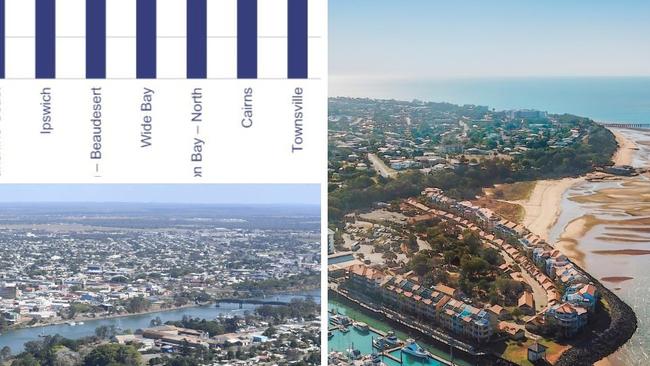New audit report finds Gympie, Fraser Coast, Bundaberg poorest in Qld
A new Queensland Audit Office insight report has painted a stark picture of the financial state of the Wide Bay.

Gympie
Don't miss out on the headlines from Gympie. Followed categories will be added to My News.
The Wide Bay has been painted as a region of low income and high government employment support in a new state audit into the regions.
The new Queensland Audit Office insight report into the State of the Region’s, tabled in parliament Thursday, has painted a stark picture of the financial challenges facing residents of Gympie, Bundaberg, and the Fraser Coast.
Chief among these was the Wide Bay’s status as the poorest region in the state.
The report says the average median weekly income barely cleared $1000, lower than the median incomes of even far regional corners of the state including the Queensland outback and Darling Downs-Maranoa areas.
It was the only one of the 15 listed regions with an average income below $1250.
NAMED: Man charged with trafficking after $1.4m meth bust

It average was almost half of the amount earned by Moreton Bay-South region residents per week, and was identified in the report as having “the lowest proportion of people of working age, between 15 and 64”.
A high reliance on government employment support was flagged in the report, too.
It says $120 million was provided across the region by state government departments to support employment from July 1, 2021, to June 30, 2023.
This was the highest of the 15 regional areas listed, and only slightly below the amount of support given to the Greater Brisbane area across the same period.
Massive native title decision looms for Sunshine Coast and beyond

Cairns was the next closest at about $110 million, and every other region received less than $100 million.
The largest chunk of this funding went to the Wide Bay’s councils, while the region’s businesses were given more than $20 million in help.
The report is likely to raise new questions about the how the region will look in the future, with a population surge predicted to taper off considerably compared to the rest of the state.
The region recorded the 7th highest annual average population growth of the 17 region’s listed in the report from 2019 to 2023, at about 2.5 per cent, the report says.
This was expected to swiftly change in the coming years, with the forecast average growth for the Wide Bay predicted to be the fifth lowest in the state, at about 0.5 per cent per year from 2021-2046.
The audit office says the report was created to provide greater insights into the regions, with Queensland having “the most people who live outside the greater capital city” than any other state or territory in Australia.
“Around three-quarters of all Queenslanders live in the regions, and the population is expected to grow over the next 20 years,” the report says.
“More demand for government services in the regions will follow, along with a greater need for co-ordinated planning, economic, and social development activities.”



